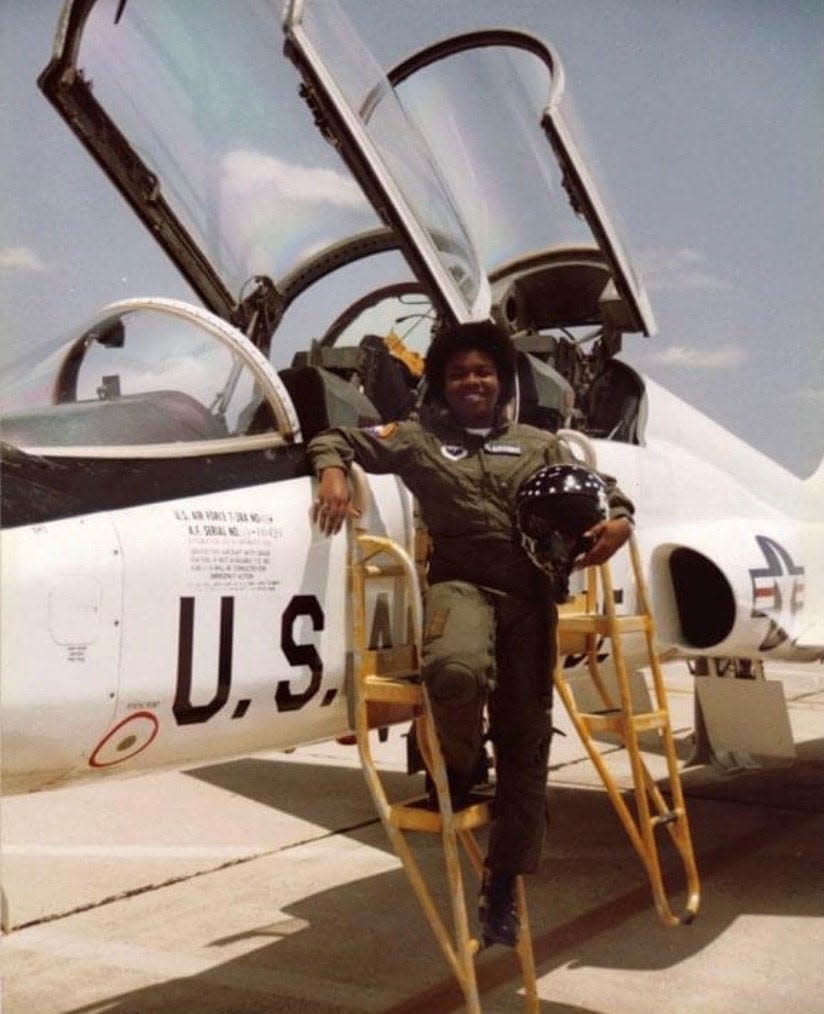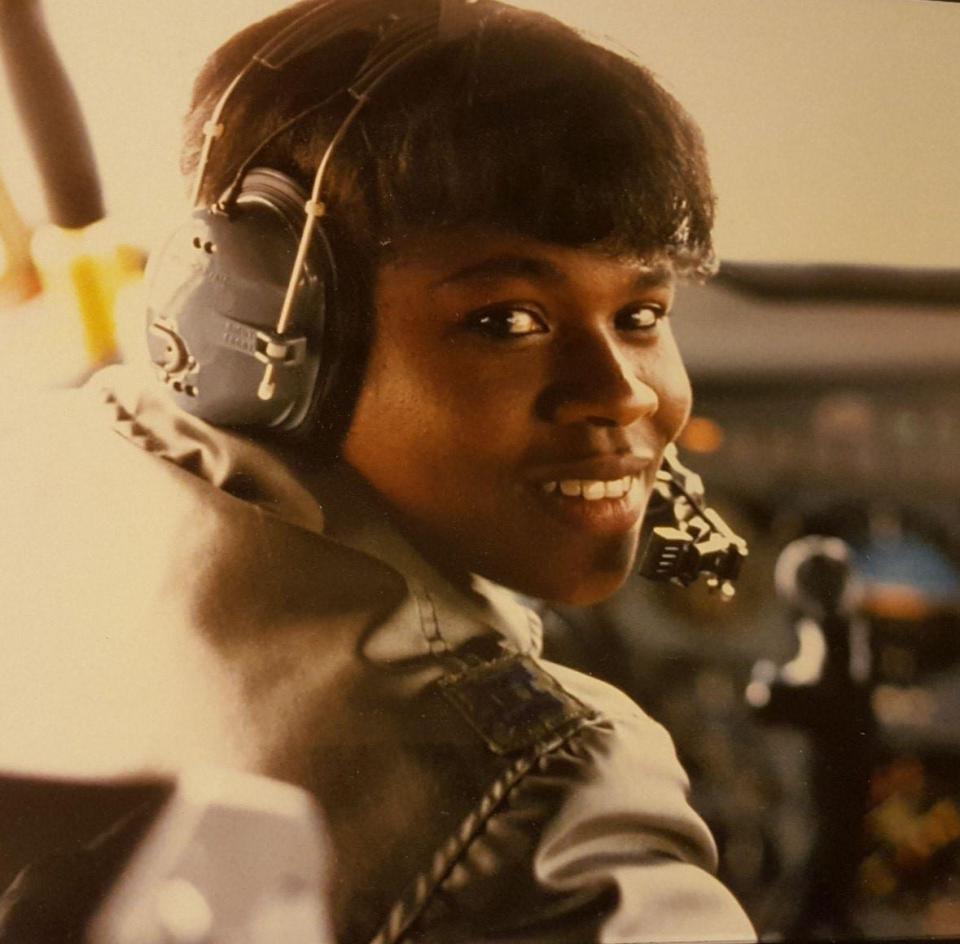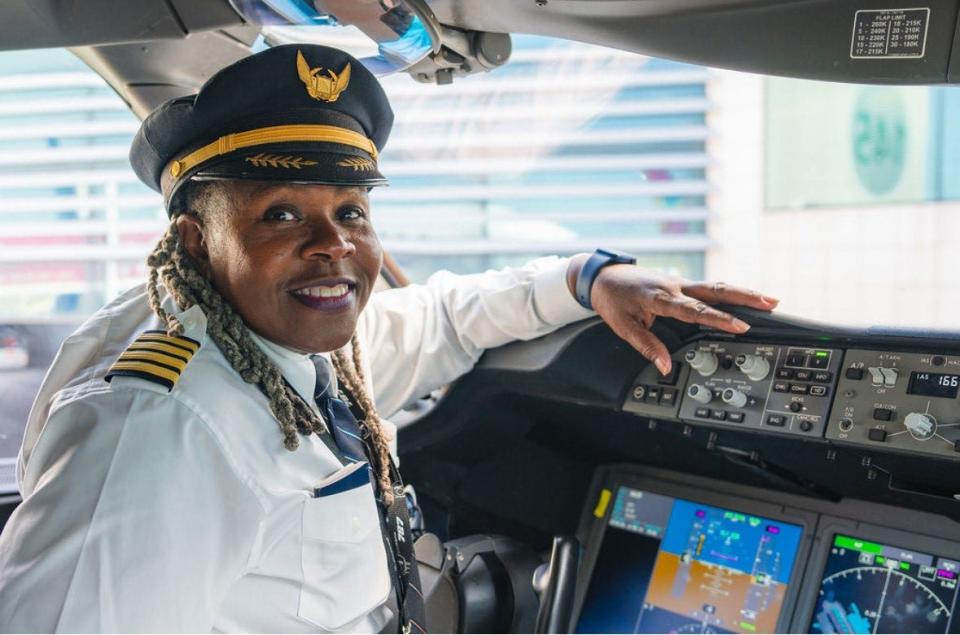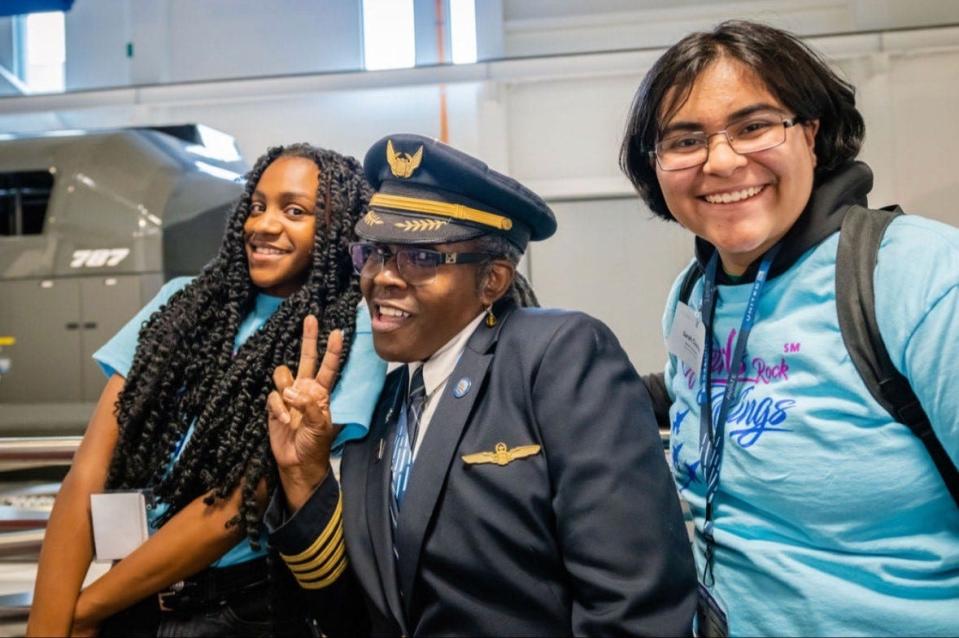The odds were stacked against her.
Theresa M. Claiborne was a woman, shorter than the average height required to be a pilot, and she was black.
But she kept her eyes on the prize and shattered the glass ceiling when she became the first black female pilot in the history of the U.S. Air Force in 1982.
Along the way, she experienced countless examples of sexism and racism, but nothing stopped her from pursuing her dream.
As a black female pilot, she belongs to a cohort of less than half of 1% of all pilots in the US, according to her website.

She recently took time with The Reporter-News to reflect on her career and all the obstacles she’s had to overcome.
‘In any case necessary’
Claiborne didn’t grow up thinking she would become a pilot, let alone the first Black woman to serve as a command pilot and instructor for the KC-135 aircraft. However, she grew up in a military family.
When her father retired from the Army, Claiborne was in the ninth grade in Sacramento, California. When she went to college, it was the longest stretch she had ever lived in one location.
She told her father she wanted to join the military and when he asked her why, Claiborne said, “Why not?”
“Well, first of all, you don’t know how to follow orders,” he told her.
“I’m going to be an officer,” she said. “I will give the orders.”
When she first entered the ROTC program, she considered a career in public affairs. However, history was made when she was given an incentive ride on a T-37 training aircraft.
Claiborne caught the flying bug, but was told at the time that flying was not an option. At the time, only ten women were given a place at the flight school – that’s ten women within the entire air force.
Her dreams were dashed, but not for long. The following year, she was told that the Air Force had decided to increase that number to 30, and Claiborne began pilot training with just seven women in the class at Laughlin Air Force Base in San Antonio.
However, she faced another major obstacle when she completed her classroom pilot training. She was only 6 feet tall and the height requirement was 6 feet 10 inches.
While waiting for her exemption to continue pilot training, Claiborne was sent back a class and watched as the other female students moved forward to train in the air.
Claiborne had been given one last chance; if she was at least 3 feet tall when seated, she could continue with pilot training.
Despite having already taken a brake test on an airplane during the flight, she was told that the doctor would inspect her the following Monday morning.
She spent the weekend doing nothing at all because she didn’t want to overexert herself and she also knew that a person is naturally taller in the morning. She went to physical training on Monday morning, sat down as long as she could and passed the test.
She completed training and was assigned to the KC-135 aerial refueling aircraft. At that time, women were not allowed to fly combat missions.
She said that even though she was not “allowed to go into combat,” she flew her plane through various combat zones to refuel fighters. In fact, her unit was the first to be deployed to Saudi Arabia during Operation Desert Shield before Desert Storm.
When Claiborne reflected on her distinguished career, she said she “stood on the balls of my feet my entire military career” to ensure she was tall every step of the way, regardless of the many barriers she had overcome.
She simply lived by the motto “by any means necessary” to achieve her dream.


‘I don’t do catering. I am your pilot
Despite her achievements, Claiborne experienced both racism and sexism along the way, but never let them hold her back.
In one notable experience, she was the aircraft commander of a mission involving the KC-135 refueling the B-52 bomber aircraft. When the B-52 aircraft commander arrived to brief her team, he spoke only to Claiborne’s co-pilot.
The B-52 commander spoke about the upcoming mission as Claiborne listened in silence.
She said he “naturally assumed I was the co-pilot.”
When he finished, Claiborne’s co-pilot responded curtly, “Maybe you want to talk to the Ace?” referring to Clairborne as the Ace, the aircraft commander.
Rather than react negatively, however, Claiborne shrugged it off, hoping it would become a learning experience for that commander in his career.
The racism and sexism also carried over into her time at United Airlines. Claiborne became the second black female pilot at United Airlines and also became a captain.
However, as a black woman in uniform, Clairborne said she was mistaken for a flight attendant in the air and for a baggage handler on the ground at one airport.
In one notable instance, when she was a pilot of the Boeing 747, she emerged from the cockpit and into the galley on the upper deck of the aircraft. A flight attendant looked at Claiborne and asked if, as she was loading the galley, she could place something in a certain area.


Claiborne let her finish and said, “I don’t do the catering. I’m your pilot.’
Reflecting on that incident, Claiborne said, “It didn’t matter if I had my hat on or not. You know they saw a uniform and as a black woman it’s like obviously I’m not the pilot.”
Sweetwater museum tapes
Growing up, Claiborne did not have a black female pilot to look up to, as black women were not allowed to participate in the Women Air Force Service Pilots program during World War II.
Although she is now a board member of the WASP Museum in Sweetwater, she said she was reluctant to accept the position.
Her grandmother was ineligible to fly with the WASP pilots during World War II. But Claiborne decided to join the board and make sure all women know there is a chance to become a pilot.
“If they can see it, it can be them.”
Claiborne has charted her own path while inspiring others to do the same. She is also a founding member of Sisters of the Skies, a nonprofit organization that develops pathways and partnerships to increase the number of Black women who become professional pilots, according to her website.
Since Claiborne became president in 2016, she has mentored many aspiring Black female pilots.
However, she said that “money is the biggest obstacle,” which is why Sisters of the Skies has awarded several hundred thousand dollars in scholarships to aspiring pilots.
The organization also tries to inspire girls at an early age.
Most of the people who benefit have “never been on an airplane,” Claiborne said. That is why the organization takes young girls on a plane trip.
“We come into full battle,” she said.
All the black female pilots come in their uniforms to take the girls into the air and hopefully inspire them early on.
“If they can see it, they can be it,” she said.
‘Don’t let anyone tell you you can’t do it’


Although Claiborne recently retired as a pilot for United Airlines, she is not one to sit still for long.
After her retirement, she plans to continue mentoring young aspiring pilots with the Sisters of the Skies organization, in addition to public speaking engagements.
Claiborne had this advice for aspiring pilots: “Keep your eye on the prize and don’t let anyone tell you you can’t do it.”
This article originally appeared on Abilene Reporter-News: Grit: First Black female Air Force pilot reflects on legendary career







